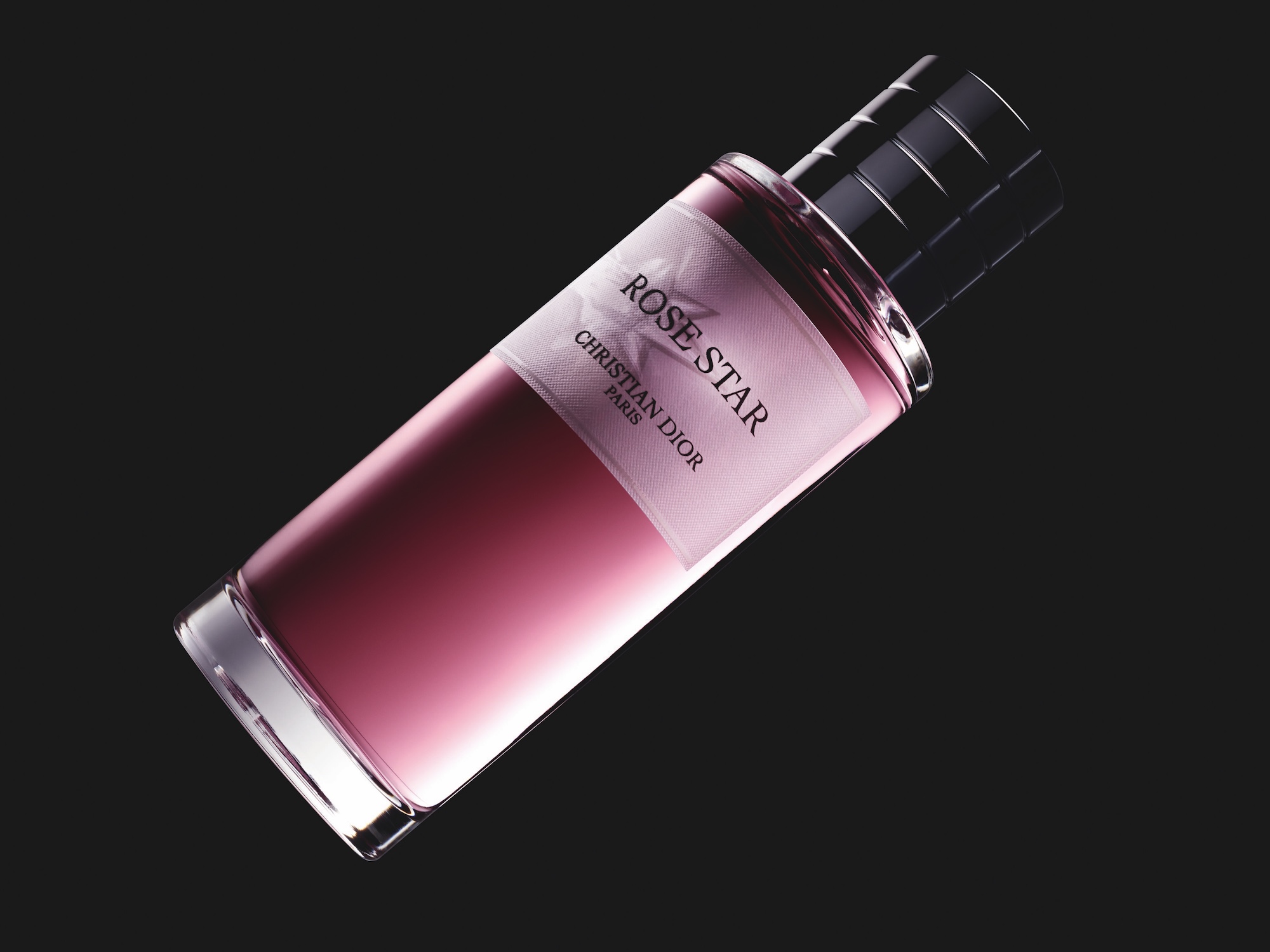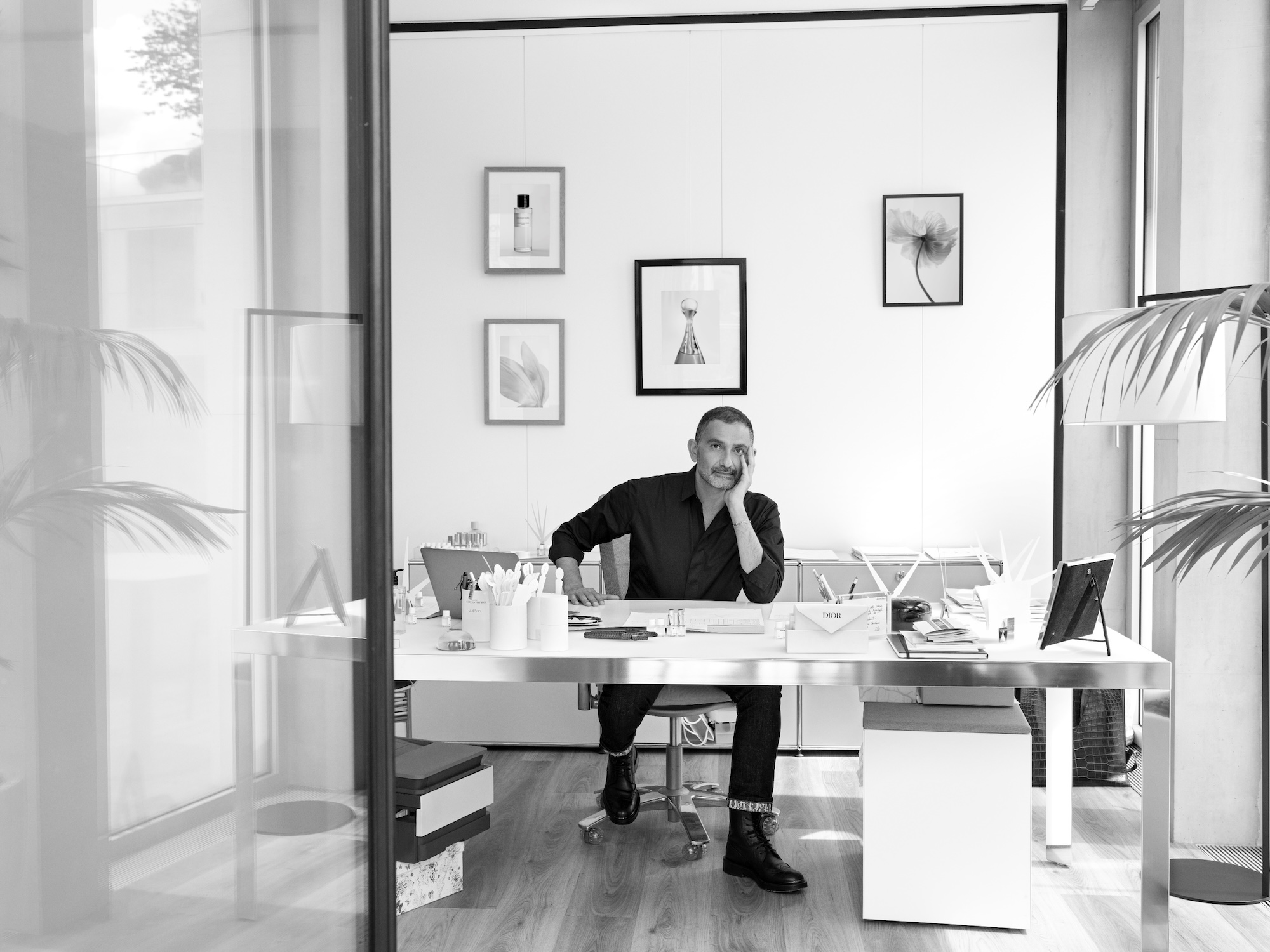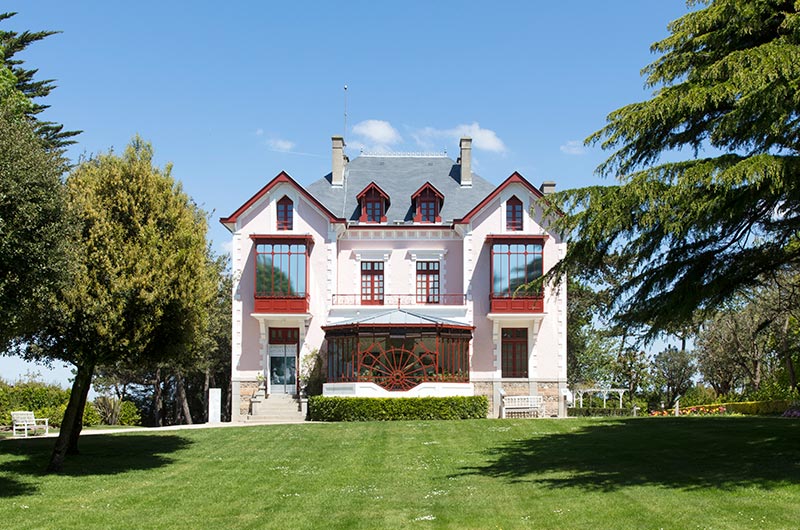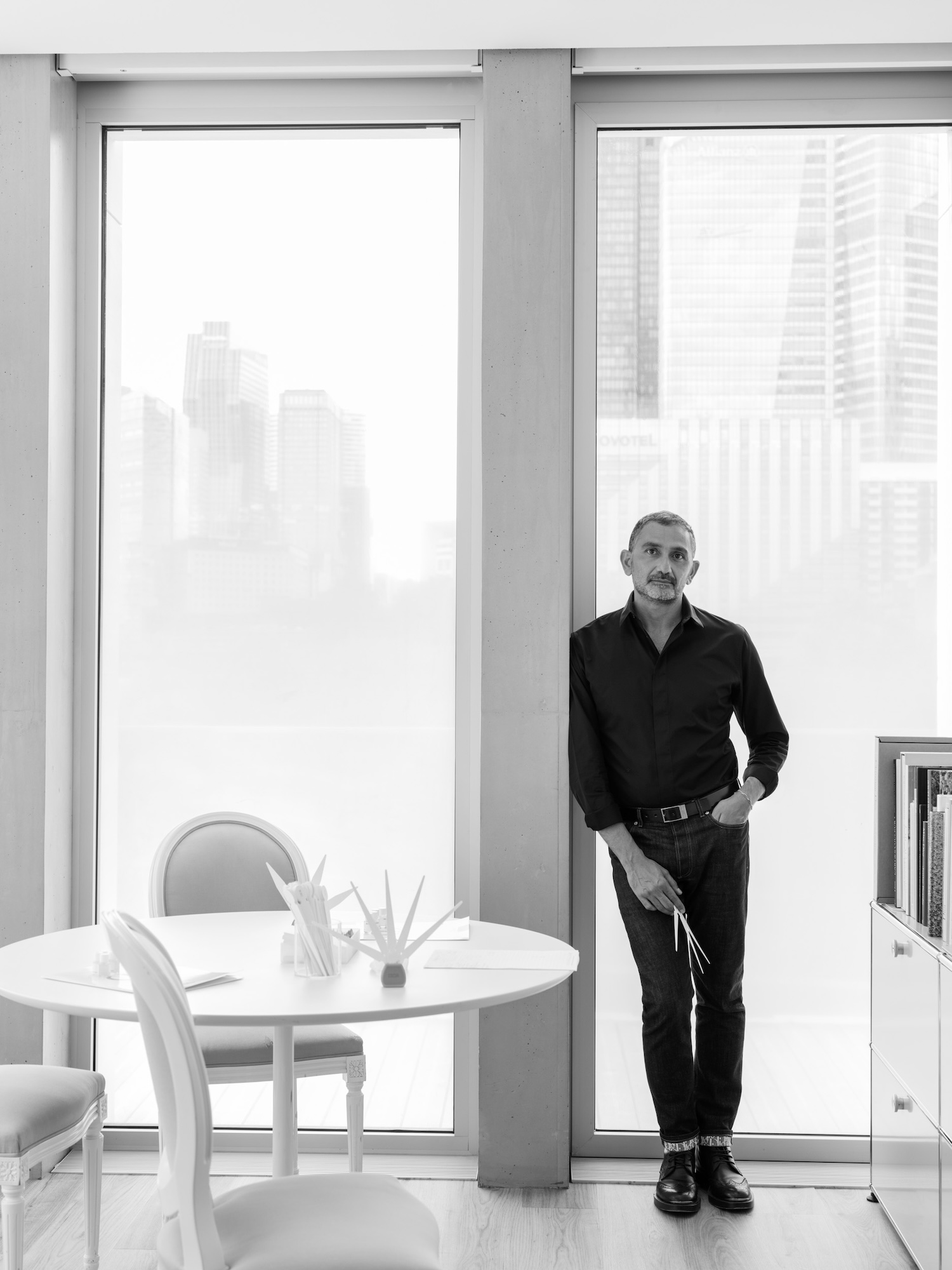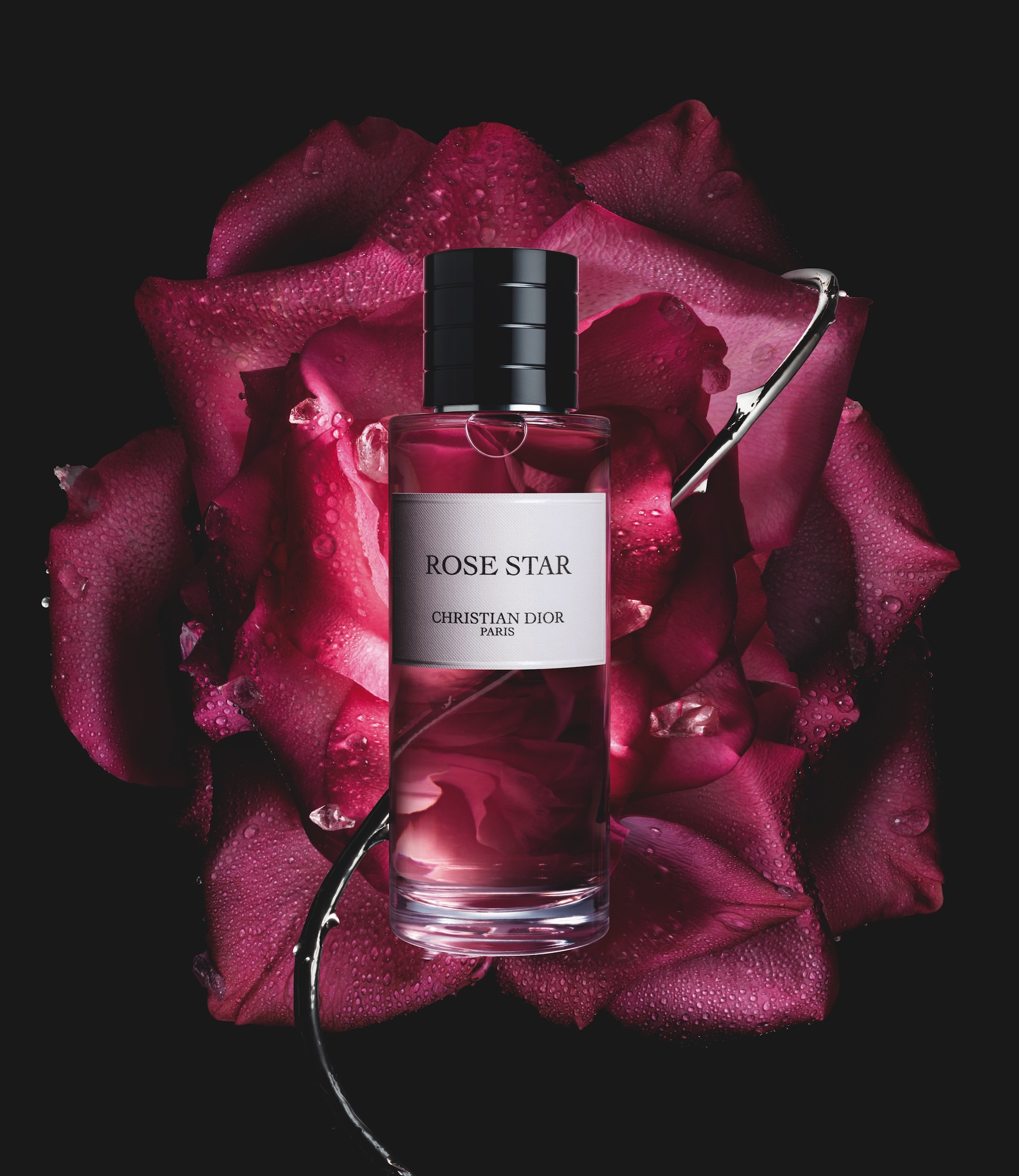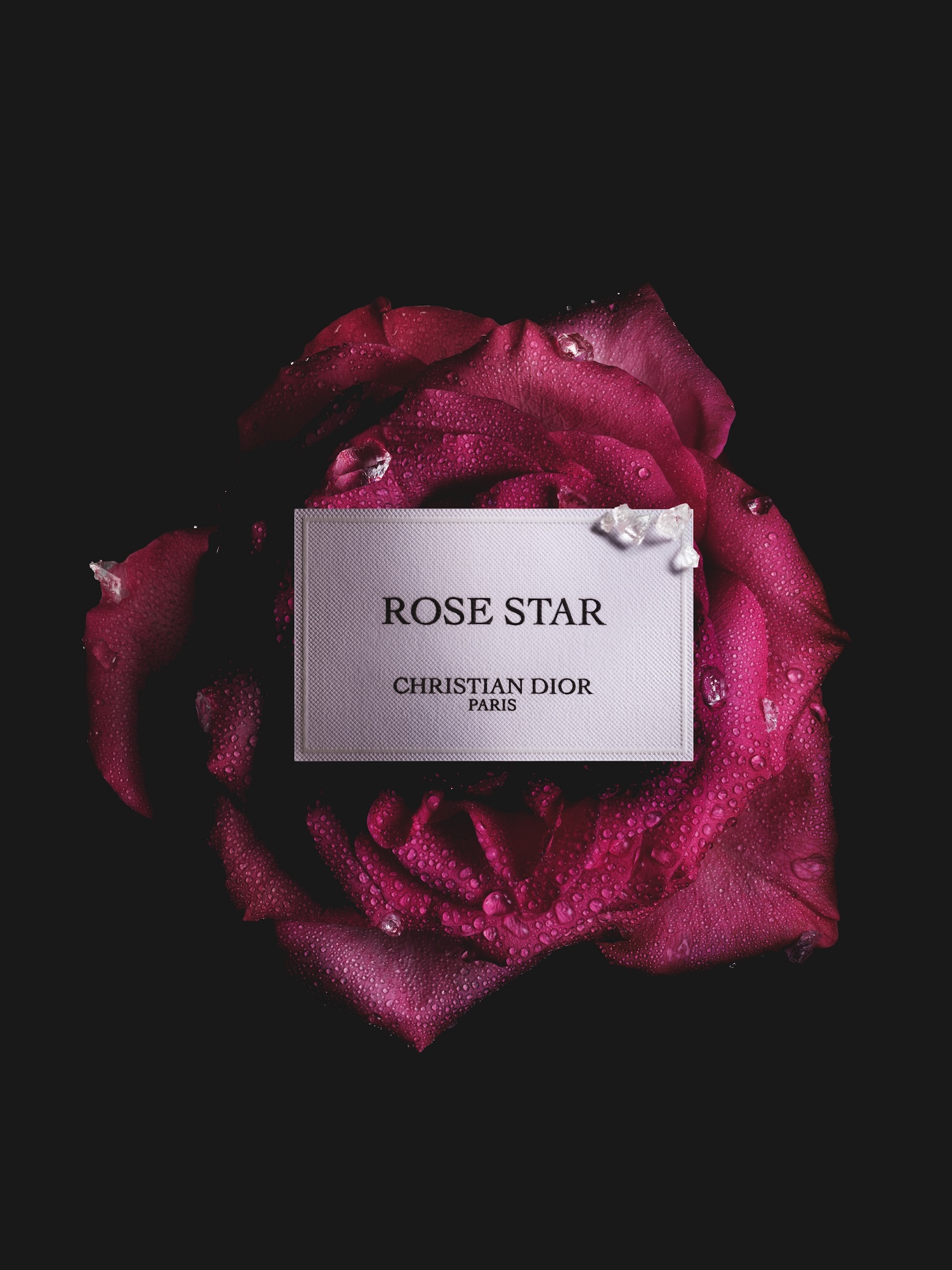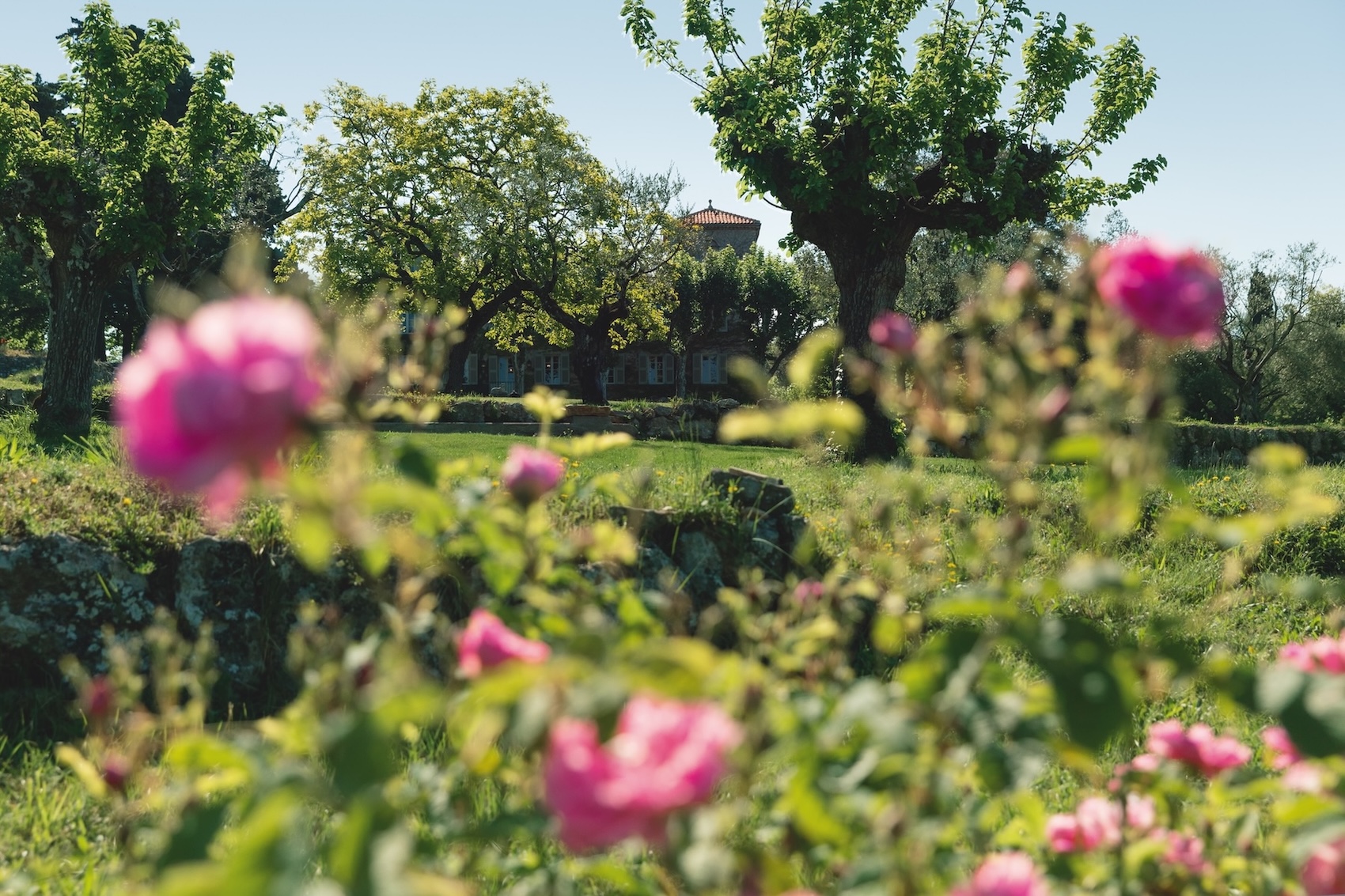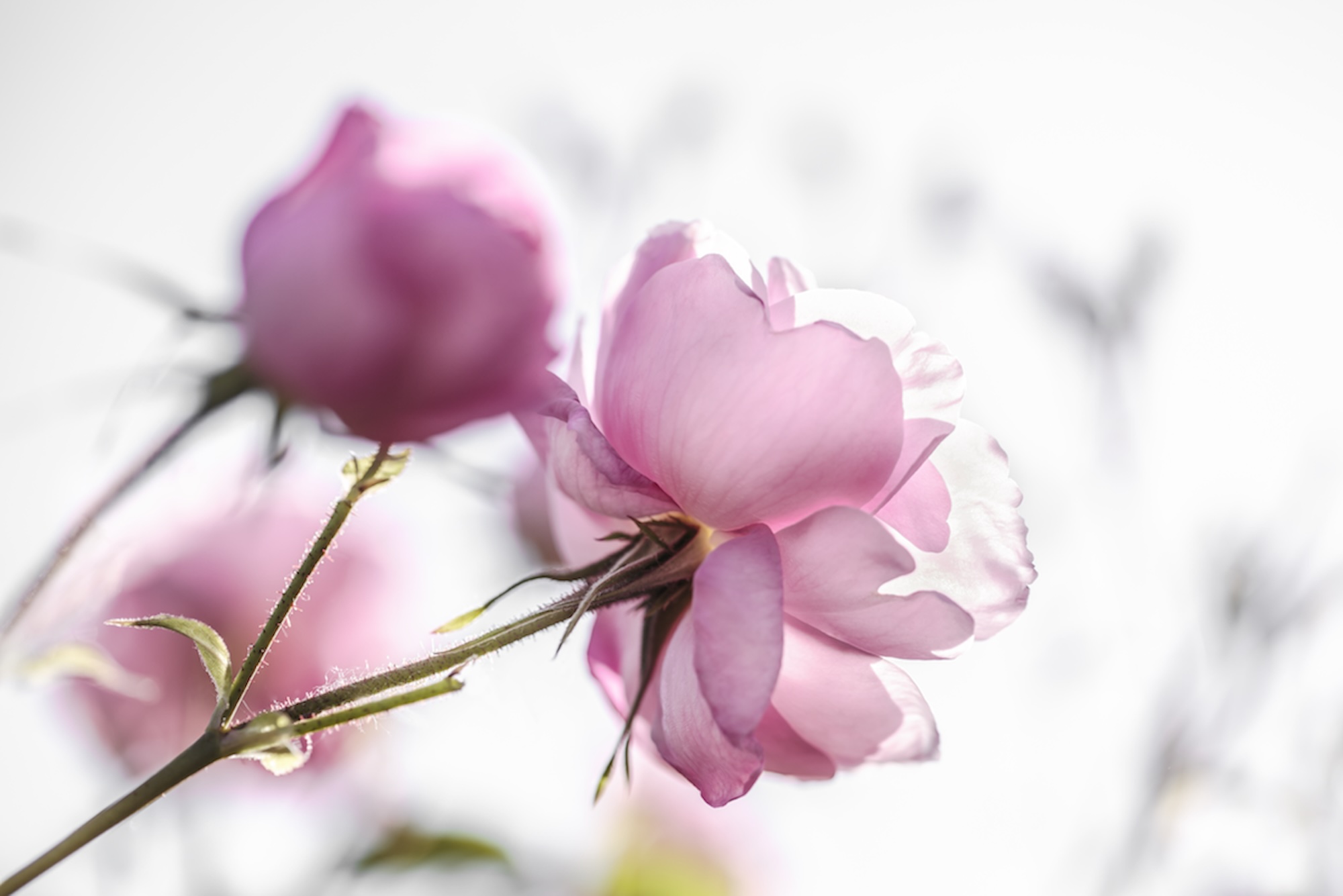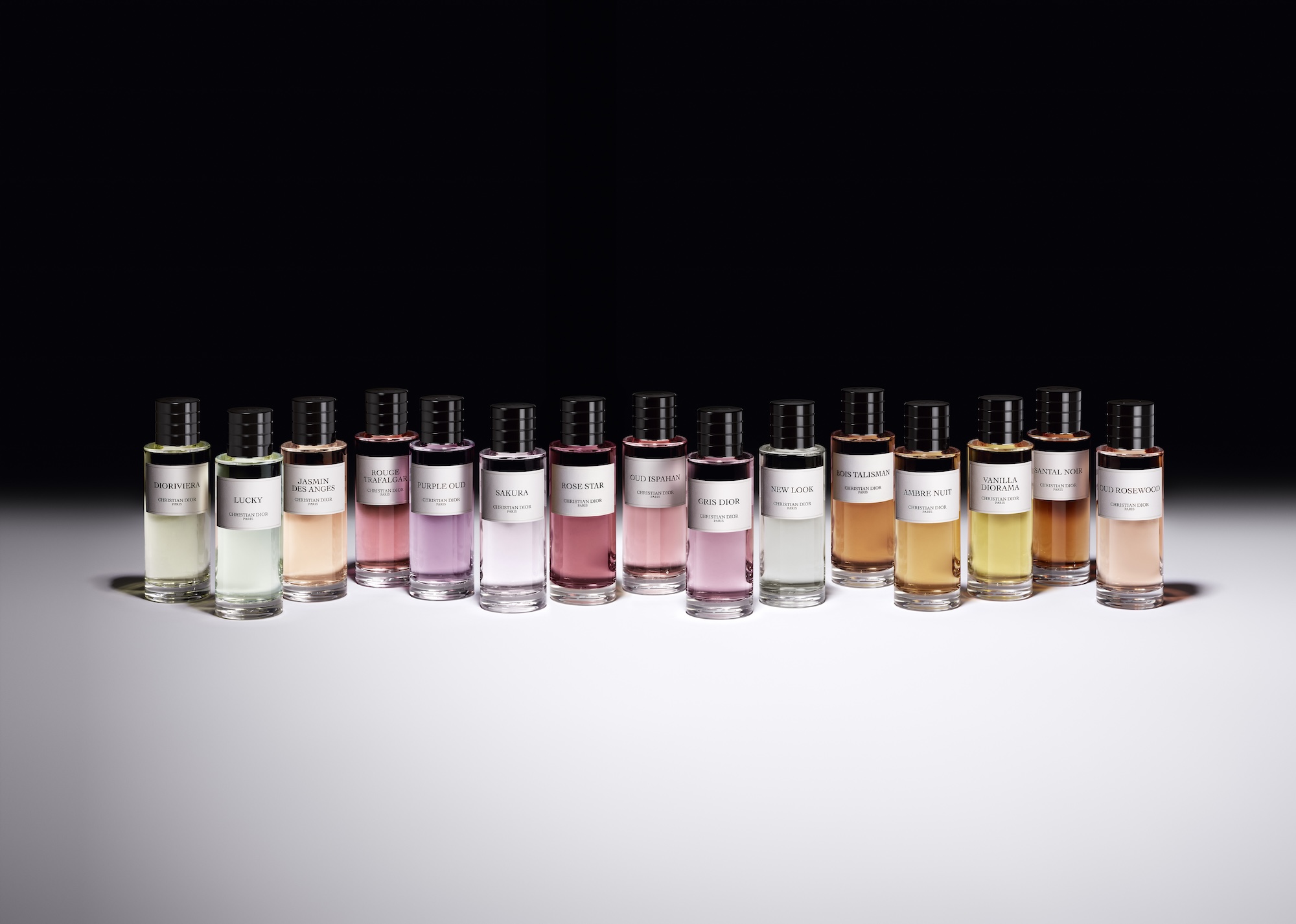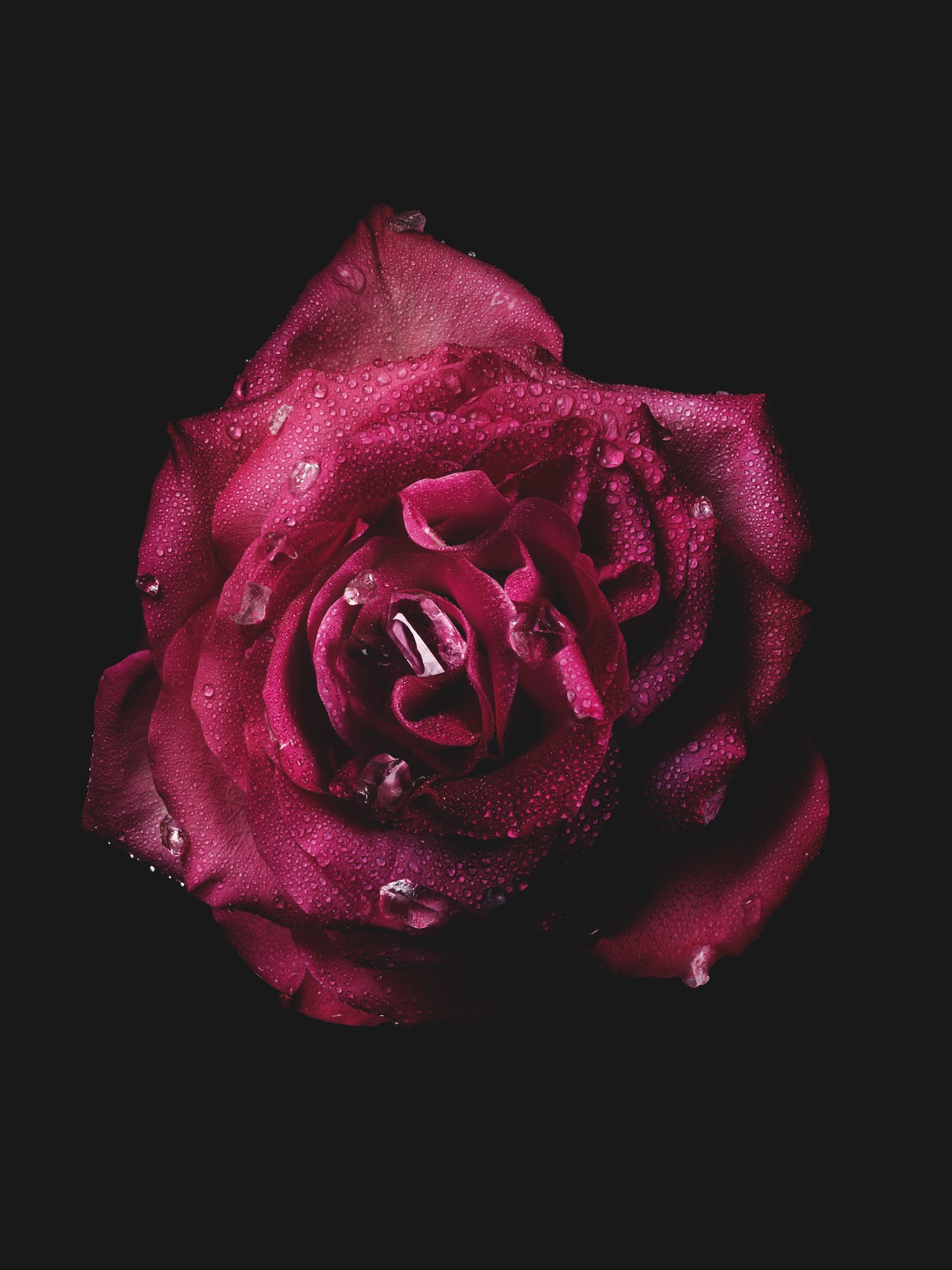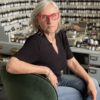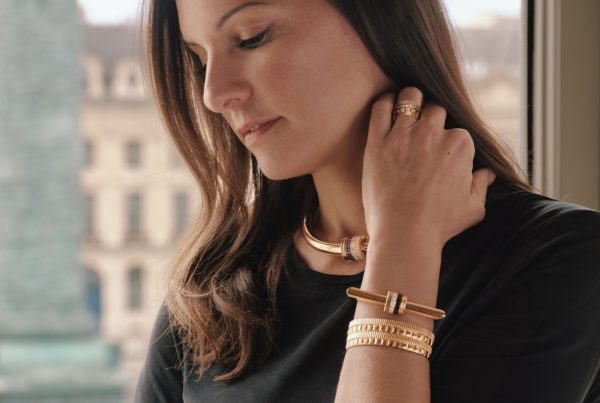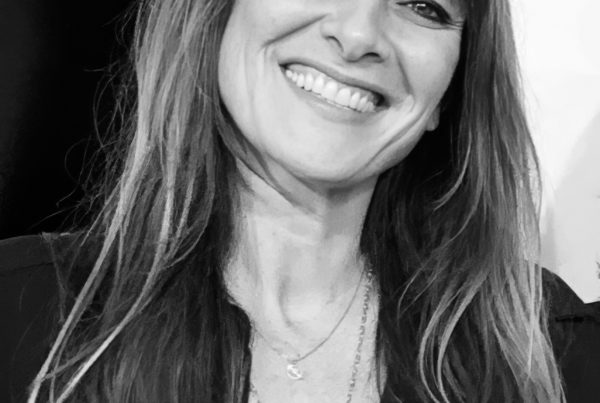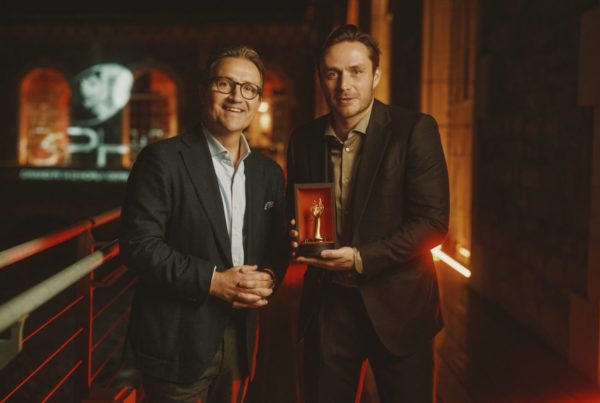The whispers of a Rose according to Francis Kurkdjian
Creator of iconic fragrances for some thirty years, Francis Kurkdjian, Creative Director of Perfumes for Dior, composes with memory and emotion. His latest opus, Rose Star, is a journey into the world of Christian Dior, in search of his favourite flowers and a lucky symbol. Isabelle Cerboneschi
When I heard that Dior was launching a fragrance called Rose Star in September, my imagination was triggered. What could it possibly refer to? Surely not the celestial rose from Dante’s Divine Comedy: it was unlikely that Francis Kurkdjian would open the chapter on the scents of sanctity. Was it a fragrant evocation of the Rosette Nebula, located in the Monoceros constellation, which offers astronomers a magnificent view of a blooming rose? I had to wait until May and a meeting with Francis Kurkdjian, Creative Director of Perfumes for Dior, at the Château de la Colle Noire, which was Christian Dior’s haven of peace, to discover the final word on this story.
La Colle Noire, Christian Dior’s Provençal haven of peace ©Dior
Some artists sculpt stone, others sing of the beauty of the world, but Francis Kurkdjian composes with the invisible: perfumes. His latest opus, Rose Star, is a delicate tribute to Christian Dior, his favourite flowers and his favourite symbol: the star. According to legend*, on 18 April 1946, on his way to a meeting with textile industrialist Marcel Boussac, who had agreed to finance his fashion house, Christian Dior stumbled upon a metal star that had fallen off a horse-drawn carriage. The superstitious man took it as a sign of destiny. This star, which became one of the house’s codes, is preserved in its heritage and followed him until his last breath in 1957.
And what about the rose? To find the answer, we must go to the source: Villa Les Rhumbs, the Dior family home in Granville, Normandy, where the couturier spent his childhood. This house with pink walls was surrounded by a windswept garden on the edge of the English Channel, where, against all odds, Madeleine Dior, the couturier’s mother, strove to grow roses. The rose and Dior are a love story.
Villa Les Rhumbs Photo archives © Christian Dior Museum
Francis Kurkdjian brought these two symbols together to create a unique fragrance. It is not a gourmand rose, like so many others, but a complex one embracing all the facets of the flower, even the lesser-known ones. A fragrance that reflects its creator.
Francis Kurkdjian’s career path is unusual. Born in Paris in 1969 to a family of Armenian origin, he grew up surrounded by beauty and the echoes of a thousand-year-old heritage. He dreamed of becoming a ballet dancer, training his body from the age of 5 to 25. He ultimately chose to express himself through the language of perfumes, which have the power to bring back forgotten memories and tell stories without words.
At the age of just 26, this prodigious perfumer created his first best seller: Le Mâle by Jean Paul Gaultier. This perfume became a classic and propelled him into the big leagues. Since then, he has continued to create fragrances that intertwine memory, dreams and expertise. This discreet visionary founded Maison Francis Kurkdjian in 2009: a laboratory of ideas where freedom of expression and audacity reign supreme, which was acquired by the LVMH group in 2017.
Francis Kurkdjian became the new Creative Director of Dior Perfumes in October 2021. ©Brigitte Lacombe for Christian Dior Parfums
In October 2021, Francis Kurkdjian crossed the threshold of the House of Dior to become its new Creative Director of Perfumes. He then engaged in ‘an intimate conversation with Monsieur Dior’ in order to better understand the couturier’s spirit, become the guardian of the House’s iconic fragrances and open new olfactory chapters in the great book of Dior perfumes.
After reinventing L’Or de J’adore in 2023, he added new fresh-fruity and sensual-woody accents to Miss Dior, the fragrance created in 1947, the new version of which was launched in early September. But it is with the Private Collection, which includes Rose Star, that Francis Kurkdjian is able to express the full range of his talent in complete freedom.
Rose Star enriches the Dior Private Collection ©Dior Parfums
INTERVIEW
A perfumer’s raw materials are a bit like a novelist’s alphabet. What story are you telling with Rose Star?
Francis Kurkdjian: What’s interesting is to see how certain objects or symbols dear to a designer during their lifetime can later become true codes of the house. Christian Dior, for example, had a particular passion for flowers, especially roses. He designed many dresses based on the shape of roses. One of them, known today as the ‘New Look’, was actually called Corolle because it was shaped like an inverted rose. The term New Look was coined by the press (by Carmen Snow, editor-in-chief of Harper’s Bazaar magazine, editor’s note) and ended up referring to the entire collection, but each dress had a specific name.
New Look. “Bar” suit by Christian Dior, Spring-Summer 1947 Haute Couture collection. Photo: © Association Willy Maywald ADAGP, Paris (2018) Courtesy of Dior.
And what about he star?
This is another major symbol for Christian Dior. The couturier often recounted the moment when, in Paris, he found a star in the street. This small object became his favourite lucky charm, which he still had when he passed away. These elements, the rose and the star, became codes for the fashion house, which every subsequent artistic director has referred to. Stars can be found on the back of certain perfume bottles, on bags, in numerous advertising campaigns… and even in architecture. I don’t know if you’ve noticed, but in the entrance hall of La Colle Noire, the floor is decorated with a star combined with a compass, a wind rose, reminiscent of the one at Les Rhumbs, the Dior family home in Granville, Normandy. The idea behind this fragrance was to see how we could play with these two codes: the rose and the star.
As a perfumer, translating a star into a fragrance is a challenge, because it’s a very visual, almost abstract symbol. How did you come about it?
We started with the name. At the very beginning, I wanted to call it Rose des Vents, but the name had already been registered. So we looked around for associations between ‘rose’ and ‘star’, which gave us the code name Rose Etoile, which I thought was both poetic and strong. For me, a powerful name opens creative doors: when you say it, you can guess what the fragrance will be like. Rose Star stood out.
The fragrance could have been called Rose des Vents, but the name had already been trademarked. Rose Star prevailed. ©Christian Dior Parfums
The rose is a flower with many facets. It can be sweet like a lychee, peppery, intoxicating, raspberry-like or green. Which side of the rose did you choose to reveal with Rose Star?
We worked with the Centifolia rose. Here is one that I picked in the garden… If you smell it, you can discern five main facets that I linked to the five points of the star. First, there are citrusy, lemony notes. Then there is a spicy aspect, which is very present in roses used in perfumery. We never think of roses as spicy because we consider them as a whole, but they have very powerful clove nuances. Then there is a fruity side, somewhere between lychee and strawberry, followed by a honeyed facet that you can’t really smell now because this rose is very fresh: I picked it less than an hour ago. And finally, there is an impression of umami, something very sweet and very mellow. I associated this facet with musk. It wasn’t deliberate marketing, but a happy coincidence: five facets of the rose and five points of the star, like a lucky charm.
Why did you choose the May rose in particular?
There are currently more than 10,000 different species of roses in the world. Of all the floral notes used in perfumery, the rose is the only flower that grows everywhere on the planet, with the possible exception of Greenland, because it has the ability to adapt to different climates. Roses are found in China, Asia, Africa, Europe, America, Australia, etc. This may be why it is so popular. Furthermore, the rose is a very ancient flower, one of the first to be found on earth. The naturalist and historian Pliny the Elder listed the different species available in his time (he was born around 23/24 AD and died in 79 AD): more than 2,000 years ago, there were only 14 varieties of roses! It was used as a remedy because its spicy flavour has beneficial effects on the skin and certain antiseptic properties.
May roses from the garden at La Colle Noire ©Christian Dior Parfums
When did other varieties of roses start to appear?
From the 17th century onwards, thanks to trade with China. Hybrids were created from rose varieties originating in China on the one hand and Europe and the Middle East on the other. Until then, perfumers had only used one species, Rosa damascena, which we also call the Middle Eastern rose, as it is the oldest rose we have for perfumery. At the end of the 18th century, in Juan les Pin, a breeder invented a rose that he called Centifolia because it was supposed to have 100 petals, which was not the case. It became the second species of rose used in perfumery. There is also a Taif rose, but it is only a derivative of Rosa damascena. Currently, we use two roses in perfumery. The first, the Centifolia rose, is found in this fragrance. It is also called the May rose because it only blooms once a year, in May, and you only have one month to harvest it, which makes it precious. The second is the Damask rose, which can be harvested from May to September and is slightly less expensive.
The Centifolia rose is also known as the May rose because it blooms only once a year, in May © POL BARIL Courtesy of Christian Dior Parfums
When I put a few drops of Rose Star on my skin, I feel as if I have been touched by skin other than my own. There is something very sensual about this fragrance.
On a scent card, a fragrance can seem cold and distant. But on the skin, it warms up, breathes, becomes carnal, sensual, almost sexual. It is in contact with the skin that a fragrance reveals its true nature. I like to say that a fragrance on paper is like a garment on a hanger: it needs a body to give it a soul.
We all know the song performed by Cliff Edwards: ‘When you wish upon a star’. What wish do you make when you look at this Rose Star?
That it becomes a best seller (laughs).
Christian Dior said: ‘Fashion designers offer one the last refuges of the marvelous. They are, in a way, the masters of dreams’. What role does the perfumer play?
I know that quote and I love it. After the Second World War, the trauma was immense; how could life return to normal? By recreating joy, by bringing about beautiful things. That’s what I’m trying to do today. And I see parallels with our own era: it’s not the same shock, of course, but between crises, geopolitical tensions, climate change and social divisions, we wonder where the world is heading. I too would like to ‘enchant the world’ and create perfumes like bursts of light.
La Collection Privée Dior ©Christian Dior Parfums
A friend of your mother’s worked with Christian Dior. Did she tell you any anecdotes that you use in your creations?
Yes, when I was a child and then a teenager, I often heard Françoise talk about him. And later, when I became interested in fashion and then perfume, I constantly asked her to tell me stories from behind the scenes. She told me how kind Christian Dior was to his employees, who were often very young. Imagine a couture workshop in the late 1940s or early 1950s: it was full of 16-year-old girls who had entered the world of fashion at a very young age. Françoise was not even 18 when she joined the workshop. Christian Dior, who was in his forties, spoke to them in a very fatherly way. When the presentation season came around, the whole house buzzed with excitement, just like before a theatre premiere. From the workshops to the catwalk, from the workers to the models, everyone had a crucial role to play. It was exhilarating: the fruit of months of labour was about to be presented, with the uncertainty of whether people would like it or not. When you manage 2,000 to 3,000 people, you have to succeed. You oscillate between pride in the work accomplished and fear of disappointment. Christian Dior knew how to transform this tension into a dream.
A perfume is like an invisible garment. What would be the fabric of Rose Star?
I hadn’t thought of it that way. It would be a fabric that doesn’t really exist, something airy like chiffon, sensual like very fine cashmere, or silk. Perhaps silk velvet, with its two sides: on one side, there is the extremely soft fluff, and on the other, when you brush it against the grain, you feel a slight catch under your finger. It reminds me of the sensation of a petal brushing against the skin: delicate, velvety, feathery. You could say… a fabric made of feathers?
* This anecdote is recounted in the Dior Gallery.
** Dior by Dior, 1958, Weidenfeld & Nicolson, London.

